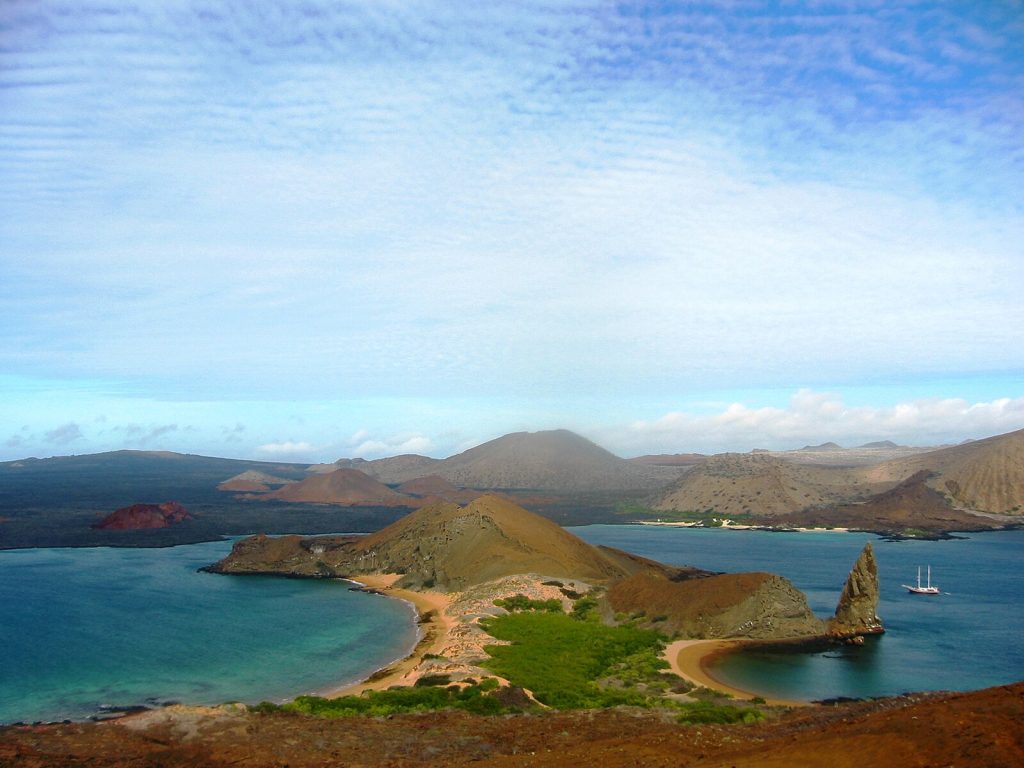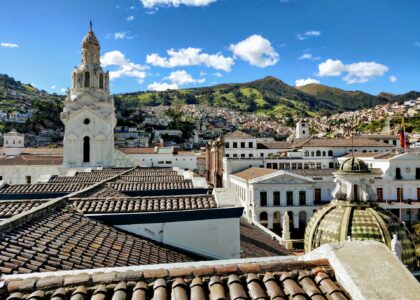Known for their natural beauty and unique species that dwell there, the Galapagos Islands are at the top of many traveler’s bucket lists. However, not only is it a mesmerizing, relatively untouched area, but it has also played a pivotal role in history, most notably when it comes to the theory of evolution by natural selection.

A Rich History
Arriving at the Galapagos Islands for the first time in 1835, Charles Darwin was able to make his most prolific discovery while exploring the unique archipelago. Darwin had traveled for years, collecting fossils and studying geography and animals along the South American coast. However, it wasn’t until his five weeks of exploration in the Galapagos Islands that he was able to make a breakthrough in his discoveries.
In fact, Darwin’s theory of evolution by natural selection came from observing species on the different islands in the Galapagos. He noticed how the same species adapted to have different features that allowed them to thrive in the environment in which they inhabited. For example, he noticed the finches had different beaks depending on the conditions of their environment as well as the food sources available. Basically, these finches had adapted to best support themselves on different islands. From this observation, Darwin based his theory which is described in On the Origin of the Species. These finches have since earned their new name: Darwin’s finches.

Natural Laboratory
Clearly more than just a beautiful place to vacation, the Galapagos Islands are a curious learner’s natural playground. To preserve this, Ecuador has taken measures to protect and conserve these mysterious islands. Since 1959, 97% of the islands have been considered a national park.
This act of protecting the land is especially important when it comes to the many endemic species that live there. Probably the species most well-known when it comes to the Galapagos Islands, as it’s their namesake, are giant tortoises. Unfortunately, before the Galapagos Islands were deemed a nature reserve, these tortoises were captured and killed for their meat. This eventually led to the loss of more than 100,000 tortoises and the extinction of certain species. Currently, there is a program in place working toward the conservation and stability of the species.
Quite a few other notable species are endemic to the Galapagos Islands, making it the perfect place for biology fans or those who are curious about the natural wonders around them. Marine iguanas are one of many fascinating creatures that can be found on a variety of islands that make up the Galapagos. These are the only lizards that venture into the water, as their flat tail allows them to swim. As herbivores, they feed on the algae and seaweed they find in the waters to survive.
The Galapagos penguin is another curious creature that calls the island home. These penguins are the only penguins that live north of the equator. Galapagos penguins are able to thrive in this tropical, warm area because of the Humboldt Current. Its cooling effect in the water allows them to live there comfortably. However, you won’t see too many of these penguins as they only inhabit a couple of the islands, and they are in fact an endangered species.
A favorite among many visitors are the curious and social Galapagos sea lions. They’re usually seen lounging on the beach or playing with each other. Compared to many other endemic species in the archipelago, these are some of the easiest to spot–and they don’t shy away from the attention, seemingly used to the gazing eyes of visitors.
Another interesting feature that makes the Galapagos Islands so unique is that it is brimming with volcanic activity. In fact, the islands were formed from the lava in the volcanoes. Magma from the sea floor eventually created enough layers of rock to form islands. Amongst the islands, there are 13 active volcanoes that do occasionally erupt.
Explore the Galapagos Islands with Engaged Education
Engaged Education offers a 12-day trip to Ecuador where participants visit a myriad of different sites, a couple of which are in the Galapagos Islands. Travelers get to experience first-hand the impressive biodiversity that has made this volcanic archipelago such an intriguing destination for explorers and adventurers alike. Specifically during their time on the Galapagos Islands, travelers will delve into themes such as the ecology and conservation of the Galapagos Islands as well as marine biology.
If you’re intrigued by these islands just over 600 miles off the coast of Ecuador, then join this once-in-a-lifetime learning experience! You’ll get a cultural and natural experience that few in the world have had the chance to enjoy. And, who knows, it could set you down a lifelong path of scientific exploration, like its most prominent visitor to date, Charles Darwin.





